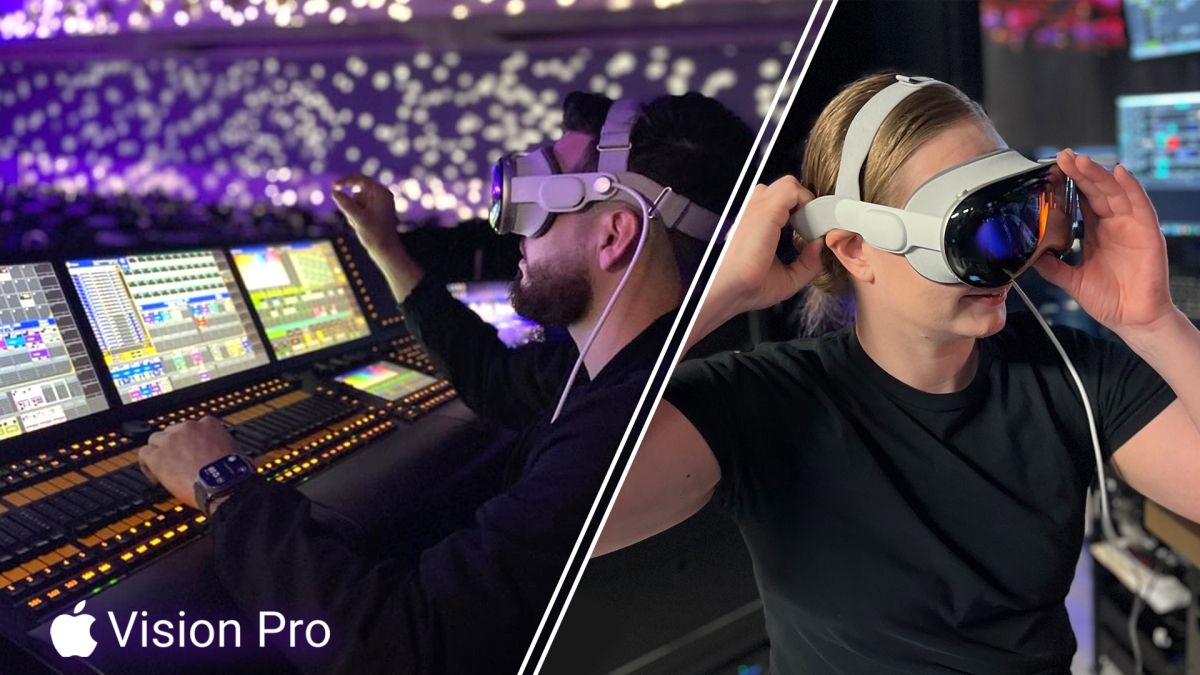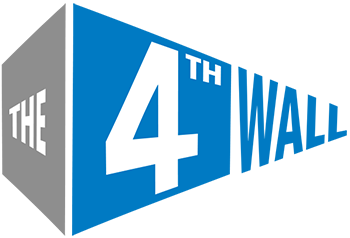Exploring the Future of Production Tech: Apple Vision Pro in Lighting and Video Design

It's not every day you get to see top creatives pushing boundaries with cutting-edge tech, but that's exactly what we explored this summer- this time with the Apple Vision Pro (AVP).
Meet Maria Malachikhina: Media Server Programmer, Content Creator, VJ, and Visuals Expert based in Las Vegas. She began her career in 2014 at LIGHT Nightclub, initially as a performer in the Cirque du Soleil troupe. After her performances ended, Maria found herself experimenting with Resolume in FOH, sparking her interest in VJing. By 2016, she fully committed to the world of visuals, landing gigs at top venues like Wynn and Drais Nightclub. Her creativity led to managing production at Resorts World's Ayu Beachclub and Zouk Nightclub, where she designed and programmed video systems, curated and created content, and oversaw all shows.
When we met up with Maria, she was still overseeing all visuals for Zouk Group in Las Vegas. Since then, her projects have expanded, and we will let her talk about that, but she made time to team up with us to test the potential of Apple Vision Pro in real-world production settings. This wasn't about hitting any benchmarks-it was just a chance for us to nerd out and see what worked and, more importantly, what didn't.
Apple Vision Pro in Live Production
You may remember that earlier this year, we explored Apple Vision Pro with Robinson Collazo, who shared his experience using the headset for event production. His experimenting revealed the potential for AVP in virtual environments, remote focusing, and preproduction workflows. While Collazo appreciated the immersive capabilities for previewing designs, he encountered challenges like reduced peripheral vision, multitasking issues, and difficulties reading fine details. Despite these hurdles, his initial trials laid the groundwork for understanding AVP's role in production tech.
So, we wanted to take it one step further. This time, we collaborated with Maria Malachikhina to explore AVP's strengths and limitations in real-world scenarios, testing it with systems like Resolume and Madrix.
First Impressions: Expanding Workflows
For Maria, one of the most exciting aspects of the Apple Vision Pro was its ability to expand workflows by providing infinite, customizable workspaces. She says, "I have to create a workflow that allows a lot of flexibility and options. A lot of the time, I would receive assets for artists or club ops while the club is open and I'm actively VJing. I found that an organized and streamlined workflow is key to being able to program while keeping the energy flowing in the room."
She highlighted the power of creating a fully flexible environment: "What was very helpful was being able to open WhatsApp, Messages, Notes, and other windows and arrange them to see everything in your workspace. You can place the windows wherever you want in the 3D space, and they'll stay there as you move around physically." This adaptability offers a massive advantage for programmers and operators needing access to multiple tools, chats, and references without cluttering a physical workspace. "Many times, I'll find myself Photoshopping with one hand while pushing faders controlling Resolume with the other, meanwhile keeping an eye on chats for cues."
Remote Programming & Preproduction with AVP
AVP shines even more in preproduction environments. Maria sees major potential for its use in virtual programming: "With Resolume, you can send your outputs as NDI and pick them up as windows in the AVP. This is great for previzing your show because it allows you to see all of your screens in one space without having to use physical monitors." The ability to visualize complex setups without needing tons of physical gear makes AVP an invaluable tool for streamlining preproduction.
Another standout feature is the ability to remote into systems and control them while freely moving through a venue. As Maria explains, "I used TeamViewer to remote into the servers to run the GUI through the AVP. Using TeamViewer in the AVP, you can use the window like a touchscreen to select clips and other controls." This opens the door to remote programming and even operating shows from anywhere in the venue-a game-changer for production teams needing flexibility. For example, walking on stage and focusing moving lights in real-time. No more back-and-forth between the booth and the stage-everything can be handled right where it matters most.
Remote Operating & Busking
Operating in this way also introduces the potential for remote busking, allowing real-time show control with customizable workspaces that can be adapted on the fly. This is especially useful in venues where tech booths are positioned away from the main stage or have obstructed views. With AVP, operators can leave the booth and position themselves directly in front of the action while maintaining control of their systems. On the flip side, AVP could let you stay in the broadcast truck while still keeping eyes on the venue in real-time, ensuring that what's happening on stage aligns perfectly with the broadcast.
Maria noted that while the tech is promising, there are some hurdles: "The low light problem is real. In a nightclub setting with flashing lights and dim conditions, the hand-tracking loses consistency, making it harder to use controls effectively."
Where AVP Could Go Next
For all its potential, Apple Vision Pro isn't quite show-ready yet. Maria pointed out some limitations, including the headset's weight and low-resolution cameras in dim environments. Many existing applications lack optimized interfaces for the AVP's unique capabilities. "The GUI for Resolume isn't ideal-it's harder to navigate with the AVP," she says, "The Madrix Touch view was great, and I'd like to see it as its own app that connects and controls Madrix instead of having to TeamView into the server."
But the future is bright. With further development, Maria envisions a world where virtual control surfaces replace bulky hardware setups, saving space, cables, and setup time. "I think that once the cameras are improved and they create a more lightweight model this could potentially be a very strong tool in production processes."
